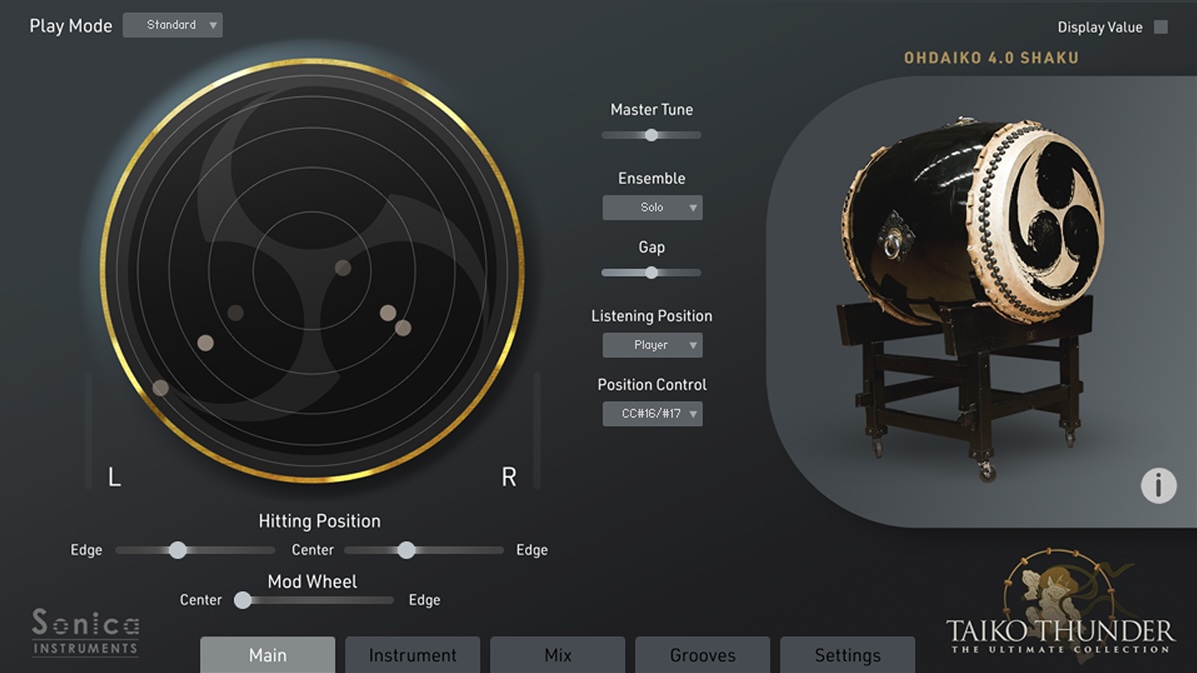
Know Your Taiko: Meet the Instruments That Define a Tradition — Part 2: Ohdaiko and Ohhira-daiko
In this second part of our blog series, we look at three of the larger taiko instruments included in TAIKO THUNDER: The Ultimate Collection.
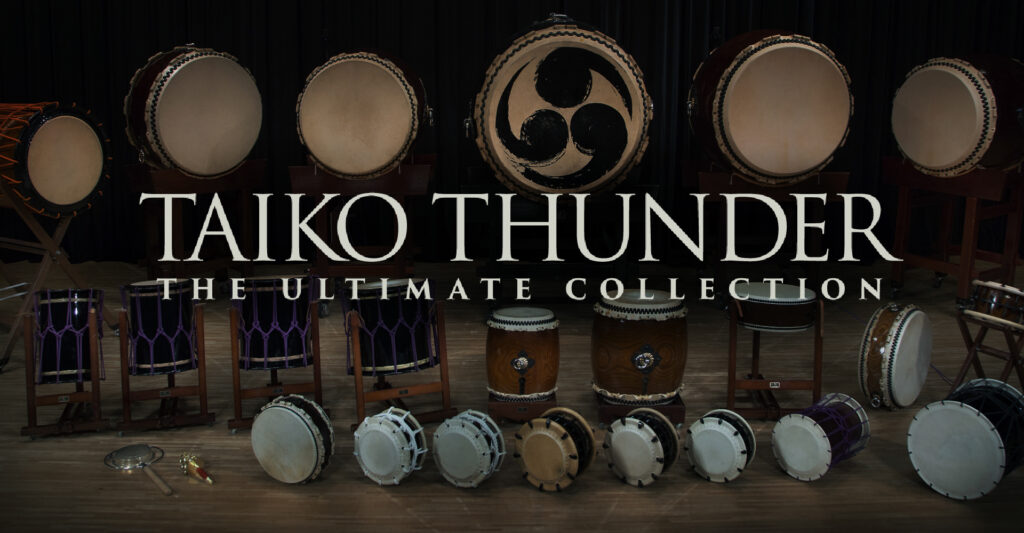
$695
TAIKO THUNDER: The Ultimate Collection is, in essence, 20 separate sound libraries — consisting of 16 taiko instruments and four percussion instruments — that cover all taiko sounds necessary for modern music making.
The collection features realistic sound variations from different hitting positions, special tone-shaping parameters for finding the perfect sound, and as many as seven separate mic channels with individual controls including hall reverb. All these features add up to a next-generation taiko library for every musical situation.
Hirado-daiko
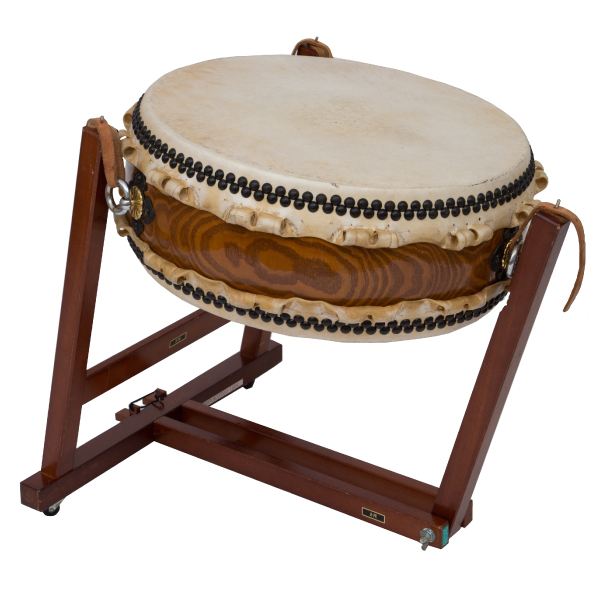
The hirado-daiko [literally “flat-bodied drum”] has a short, flat body compared to the size of the drumhead.
Because the materials and construction are the same as the nagado-daiko, the hirado-daiko has a similar pronounced bass tone. Its shorter body, however, lends it a unique sharp, yet deep, sound with shorter reverberations than its longer cousin.
The hirado-daiko can be played set on a frame or suspended from a stand.
The hirado-daiko included in the library has a diameter of about 60 cm (2 shaku in traditional units).
Ohhira-daiko
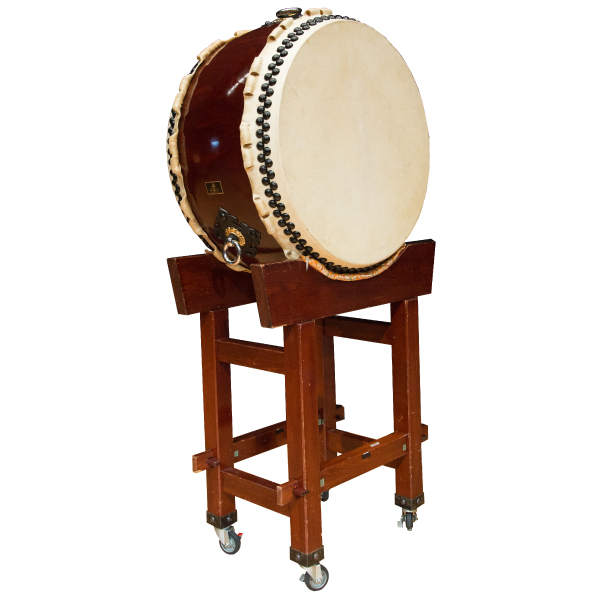
Hirado-daiko with a body diameter of more than 90 cm (3 shaku) are generally called ohhira-daiko. The ohhira-daiko is used in a wide range of situations, from solo performances to ensembles, and it often becomes a stage symbol because of its dominant sound and presence.
Its large diameter gives it a superior low-frequency range, and only the ohhira-daiko can produce deep tones that fill an entire space. There are several ways to hit the drum, including striking it from the front when it is placed vertically or striking it from above when placed face down.
The library includes an ohhira-daiko with a diameter of about 99 cm (3 shaku 3 sun in traditional units).
Ohdaiko
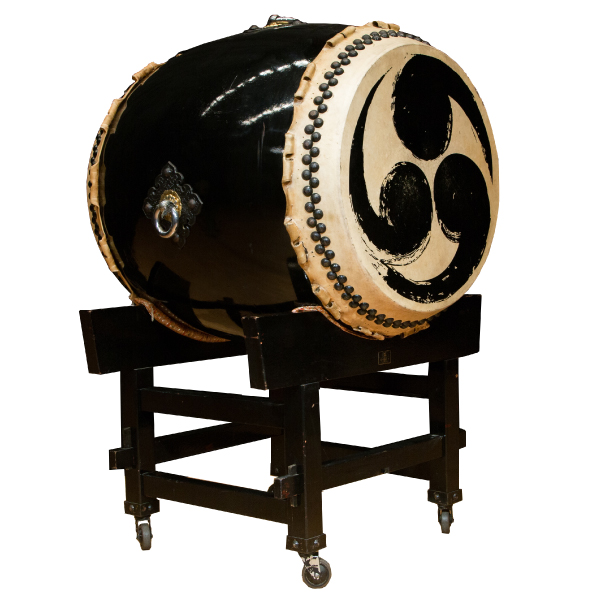
Nagado-daiko with a body diameter of more than 90 cm (3 shaku) are generally called ohdaiko. The ohdaiko is used in a wide range of situations, from solo performances to ensembles, and it often becomes a stage symbol because of its dominant sound and presence.
Its large diameter gives it a superior low-frequency range, and only the ohdaiko can produce deep tones that fill an entire space. The tone changes substantially depending on where the drum is struck, which together with its dynamics, allows for tremendous expressive power. Because of these factors, the player must have a high level of technical skill and expressiveness to play the ohdaiko well.
The library includes two ohdaiko sizes: 102 cm (3 shaku 4 sun in traditional units) and 120 cm (4 shaku).
Finding your ideal taiko sound
What makes taiko instruments so appealing is the variety of sounds they produce, which vary by the individual instrument, the instrument’s physical size, and the performer.
For the TAIKO THUNDER recording sessions, we were fortunate to have the assistance of Asano Taiko, a preeminent taiko producer that has been making instruments for more than 400 years. With their help, we were able to capture all the sonic nuances of perfectly set-up taiko instruments. This is why TAIKO THUNDER reproduces natural, well-balanced taiko sounds right out of the box.
The reality, however, in actual music production is that slight tonal adjustments are needed to suit a performer’s phrasing or to blend in with other instruments. You may also want to have greater sonic variations from different taiko sizes.
This is why we developed the Instrument Editor for TAIKO THUNDER. The editor consists of multiple parameters to adjust the individual elements that make up the overall tone. With this flexibility, you can quickly create your ideal taiko sound.
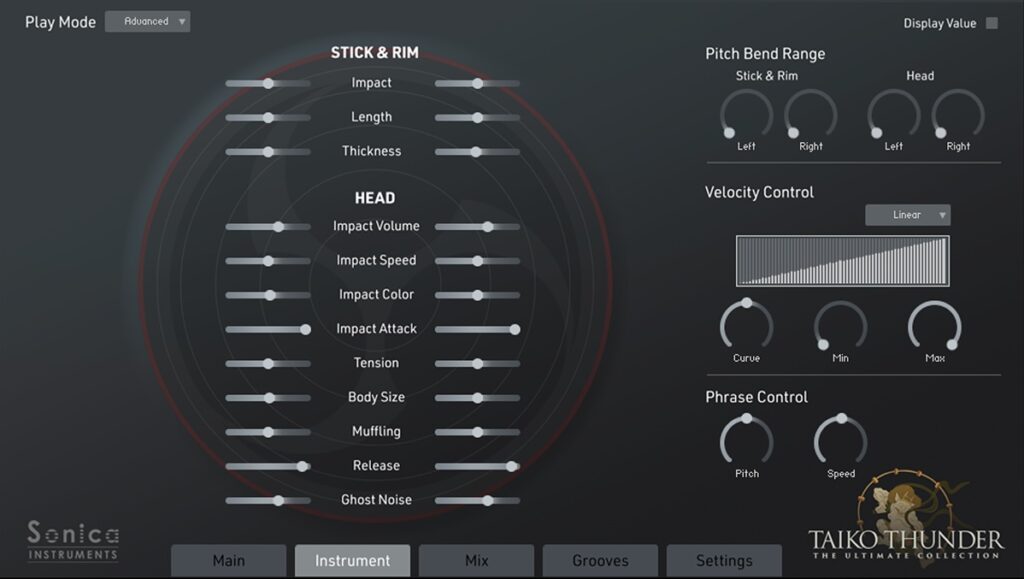
One example is the editor’s tuning adjustments. Most sample packs use pitch-shifting to adjust tunings or reproduce different tunings. The problem with this is the pitch-shifting also alters the attack. To get around this issue in TAIKO THUNDER, we made use of our proprietary sound-generation engine to give natural tuning adjustments while preserving the instrument’s attack.
The Instrument Editor also provides separate controls over the attack component and other sound elements, giving you more creative sound variations than possible with a real instrument.
